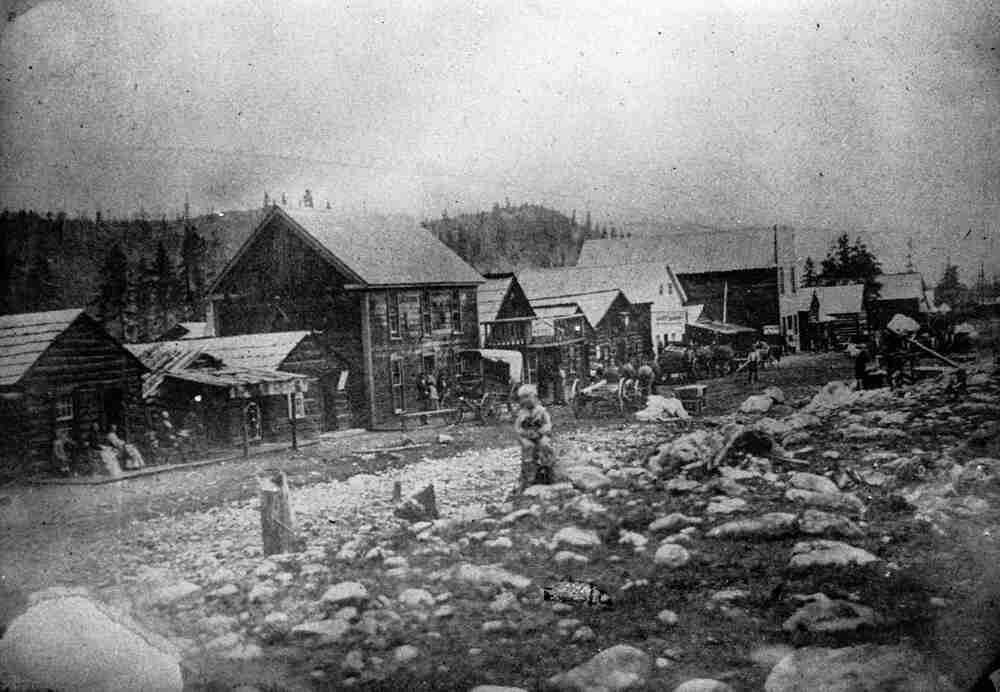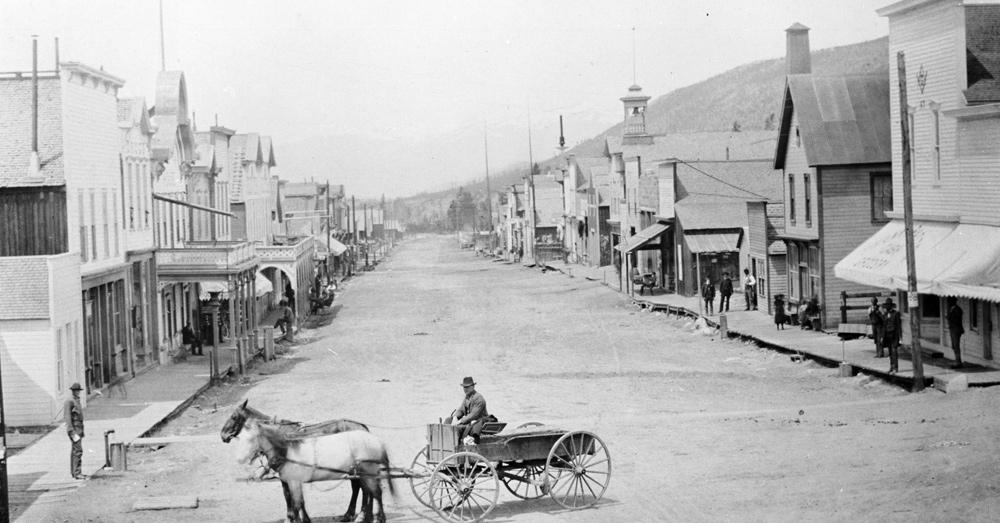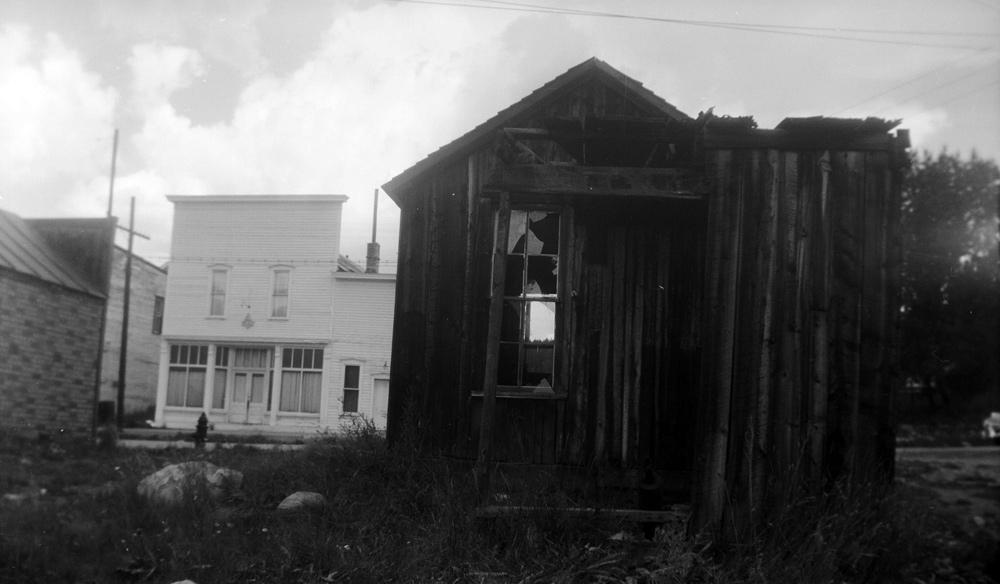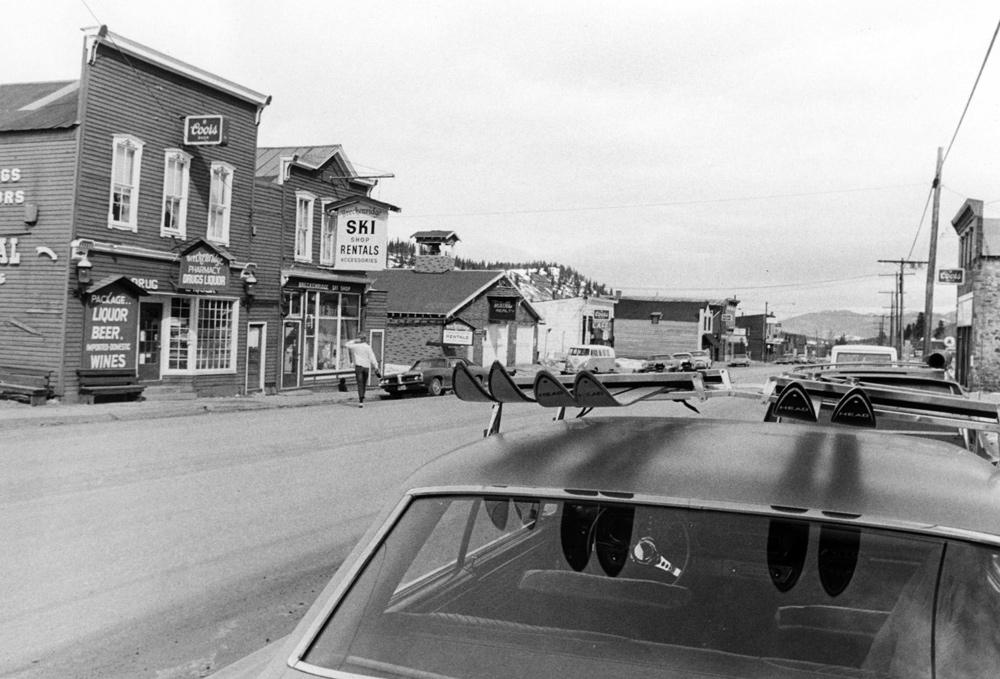Breckenridge Historic District
Full Article
Settled as a gold-mining camp in 1859, Breckenridge has gone through a series of booms and busts typical of Colorado’s mining towns. The advent of skiing in the 1960s revived the town after decades of stagnation, bringing modern development but also greater interest in historic preservation. Today, the Breckenridge Historic District encompasses forty-five full blocks and portions of five other blocks. Downtown Breckenridge is distinct among Colorado’s historic districts because of its diverse mix of buildings, illustrating the town’s three main phases of development—settlement, camp, and town—as well as the surviving evidence of mining within the town itself.
First Boom: Gold
Bands of Northern Ute Indians lived along the Blue River for hundreds of years prior to the establishment of Breckenridge. Their way of life soon vanished, however, after the arrival of the first white settlers in 1859, when the Colorado Gold Rush brought prospectors to the region. A group led by Ruben J. Spalding found gold on August 10, 1859, in the Blue River near present-day Breckenridge. Miners and merchants flocked to the new settlement. This was one of the first recorded gold strikes on the Western Slope of the Rocky Mountains.
A prospecting company led by George E. Spencer and others formally established the town of Breckinridge in November 1859. The town was supposedly named after the US vice president, John C. Breckinridge. The goal was to flatter the government and be awarded a post office, which would lend the town a sense of stability and permanence. Spencer surveyed a 320-acre town site along the Blue River, but the “town” was really a row of rough log cabins, tents, and shanties, like any other new mining settlement at the time. The streets were little more than paths between rocks and stumps.
Thanks to the flattering name or not, the town of Breckinridge did in fact get a post office in 1860. But the name caused trouble when the Civil War began. After Abraham Lincoln’s election in the fall of 1860, former vice president Breckinridge joined the Confederate Army and was commissioned as a brigadier general. The US Senate convicted him of treason. The town of Breckinridge quietly changed its name to “Breckenridge” to avoid the association. It has also been reported that the town was actually named “Breckenridge” from the start, after Thomas E. Breckenridge, a member of the original August 1859 gold-prospecting party.
Breckenridge grew rapidly in its early years, when gold was relatively easy to find. By the summer of 1861 it had nearly 100 people and boasted several stores, hotels, and saloons in addition to the post office. The mining areas around town may have had several thousand more residents. Hydraulic mining techniques arrived in nearby gulches, and in October 1861 the town was connected to the Denver, Bradford, and Blue River Company wagon road. Breckenridge was named the county seat of Summit County in 1862.
During Breckenridge’s initial “settlement phase,” which lasted through the 1860s, most buildings were constructed near mineral deposits and were put together as quickly and cheaply as possible. Most buildings were made of cut timber, not milled boards. Miners probably viewed many of these structures as temporary shelters that would suffice until they struck it rich and could return home. One surviving example of this type of architecture, though it dates to a slightly later period, is the Klack Placer Cabin.
The initial gold-rush boom in Breckenridge did not last long. By 1863 all the easy gold had been found, and miners were leaving for better opportunities elsewhere. The population dipped below 500 in 1866 and had plummeted to just 51 by 1870.
Second Boom: Silver
Breckenridge experienced its second boom after 1879, when silver-lead ores were discovered in the hills east of town. Miners rushed in to develop underground operations. The town grew quickly over the next few years, increasing from 350 people to more than 1,500 and adding about 100 new buildings. The boom continued through the 1880s, and Breckenridge developed into an important mining town and supply center. Soon after it incorporated in 1880, its first newspaper started publication. Two years later the Denver, South Park, and Pacific Railroad brought rail service to the town and opened a depot there. Breckenridge prospered, while other towns the rail line passed by began to die out.
The town’s first sawmill opened around this time, allowing residents to build with boards rather than rough-hewn logs. Breckenridge shifted from a mining camp to a true town as more substantial buildings rose. A new fire station came in 1880, a larger schoolhouse in 1882. Unlike Aspen and many other towns, Breckenridge never embraced brick or stone buildings. Residents continued to build with wood because it was cheaper and easier to use. The town soon had three fire companies to protect the wooden buildings, but even so, major fires in 1880 and 1884 reduced many buildings to rubble.
Distinct commercial and residential districts started to take shape. Main, Lincoln, and Ridge became the main commercial streets. By 1880 Main Street counted eighteen saloons and at least two dance halls, while Ridge Street had a grocery, a hotel, a post office, a bank, a drugstore, and a dry-goods store. All these streets, which had once been rocky paths, were now smoothly graded, and some featured wood sidewalks. Residential areas grew east and west of downtown. Wealthier families built just east of Main Street so the afternoon sun would hit their houses in the winter. Working-class families were relegated to the west side of town, along with light industry like lumberyards and coal yards.
During this boom the black Colorado pioneer Barney L. Ford moved to Breckenridge. Ford had originally come to town as a miner in the early 1860s but was run off his claim and headed back to Denver. In the early 1880s he returned to Breckenridge and established a popular restaurant, Ford’s Restaurant and Chop Stand, making him the first black business owner in town. Ford’s investment in the Oro Mine made him a small fortune, and in 1882 he built an elegant house for his family in the wealthy residential district just east of Main Street. Ford’s house still stands on East Washington Avenue.
Breckenridge’s silver boom lasted more than a decade but came to an end with the Panic of 1893 and the demonetization of silver. As in other silver towns, Breckenridge’s mines closed rapidly.
Third Boom: Dredging
After the silver crash of 1893, Breckenridge survived thanks to a new gold boom. Even during the silver boom of the 1880s, some gold mining had continued in the area. For example, Colorado’s largest gold nugget, the 13.5-pound “Tom’s Baby,” was discovered near Breckenridge in 1887. At the start of the twentieth century, however, miners turned to dredging for the first time, allowing them to exploit soils that had been relatively inaccessible.
Dredging the local rivers began in 1898 and became more successful in the early 1900s, when engineers and entrepreneurs developed new and larger dredging barges. Soon, barges were working the Blue River, the Swan River, and French Gulch. The dredges dug as deep as seventy feet into the riverbeds, leaving little vegetation and an altered landscape in their wake. Through the 1910s, the dredges processed hundreds of thousands of cubic yards of gravel and generated hundreds of thousands of dollars of gold and silver per year. During this boom the town built a large brick county courthouse and a brick Mission-style schoolhouse, both completed in 1909.
Dredging operations continued at a slower pace throughout the 1920s and 1930s. Mining companies shut down, and buildings were left vacant. Hoping to generate money and jobs, Breckenridge allowed the Tonopah (later Tiger) dredge No. 1 to make its way along the Blue River directly through town. Operating off and on until 1942, the dredge destroyed the vegetation and buildings in its path but did little to revive the town’s flagging economy. In 1937 the Colorado and Southern Railroad stopped operating the rail line to Breckenridge. The town’s population slowly declined, hitting 381 in 1940.
The mining economy came to a halt during World War II, when most young men went off to war. In October 1942 the US Department of War ordered a halt to all gold mining, and Breckenridge’s last dredge shut down. (A replica now operates as a restaurant at the dredge’s final location in the Blue River.) Some isolated mining occurred after the war—most notably at the Wellington Mine in French Gulch, which operated until 1973—but Breckenridge’s days as a mining town were basically over.
Without anything to keep the economy going, Breckenridge was in danger of becoming a ghost town. The population declined to fewer than 300 residents. Many old buildings burned, and others were torn down for firewood or to reduce their owners’ tax burden.
Fourth Boom: Skiing
In December 1961 the Kansas-based lumber company Rounds and Porter, which had recently bought large tracts of land in and around Breckenridge, opened the Peak 8 Ski Area. This was the seed of the Breckenridge Ski Resort, which is now one of the largest and most popular ski areas in Colorado, and it launched the town’s fourth boom as a year-round resort. By the 2010s Breckenridge had grown to more than 4,500 permanent residents. The temporary population can reach more than 20,000 on peak ski weekends.
The tourism boom brought a wave of new development, including large commercial buildings, condominiums, and “rustic luxury” mansions. Today, modern hotels and Alpine designs stand in stark contrast to the simple log structures that survive from Breckenridge’s early years. The tourist economy also brought enough money and interest to make historic preservation and restoration possible after many buildings were lost to neglect in the mid-twentieth century. Despite the town’s growth since the 1960s, various zoning codes implemented over the years have attempted to preserve the look and feel of a small “historic district” and a slightly larger “conservation district” at the heart of town. The Breckenridge Historic District was added to the National Register of Historic Places in 1980, and the nonprofit Breckenridge Heritage Alliance was founded in 2006 to maintain historic sites and conduct guided tours throughout the town.




























